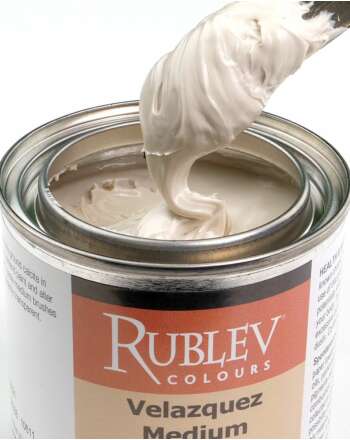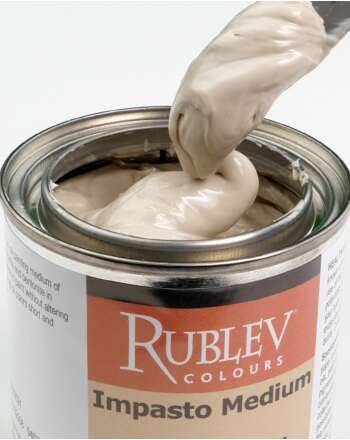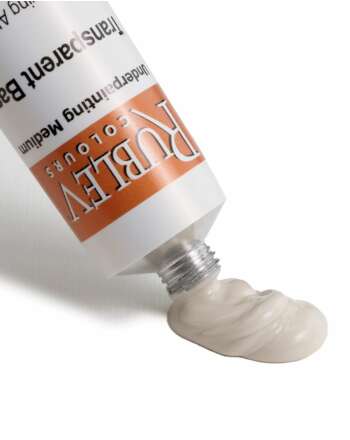
Paste mediums for oil painting consist of oil, sometimes resin, and an extender pigment. Extender pigments are white inorganic minerals that essentially become transparent when added to oil paint.
Paste mediums, also known as impasto mediums, are ideal for thickening oil paints. One of the benefits of using an impasto medium is that it dries evenly without cracking or wrinkling.
Most artists do not know that paste mediums are also the best for glazing. They do not increase the drying time of oil paint, as do most glazing mediums or oil. Because they contain pigment, they also do not increase the 'fat' of the oil paint layer.
This video guide examines oil painting paste mediums that alter the consistency of oil paint in novel ways, different from the glazing mediums that have been in everyday use since the nineteenth century.
Oil makes a slow-drying paint consisting of pigments in a drying oil, commonly linseed oil. The viscosity of the paint may be modified by adding a solvent, such as turpentine or mineral spirits (white spirits), and alkyd to increase the glossiness of the dried film.
This guide examines oil painting mediums made by Natural Pigments. These paint mediums are designed to alter the consistency of oil paint in novel ways, different from the varnishes that have been in everyday use since the nineteenth century and alkyd mediums today.
Watch our review of paste mediums in the Art Materials Advisor on the Rublev Colours YouTube channel.
Painting mediums change the handling properties of paint, such as flow out and leveling; increase or decrease tackiness and drag; hasten or retard drying time; increase or decrease gloss, increase transparency, and other physical properties of oil paint.
Paste Mediums for Extending, Building Impasto, and Glazing Oil Paint
What is the appearance of paste mediums when dried?
Paste mediums dry to a satin or matte sheen like most oil paint when used in recommended amounts.
What is the recommended ratio of oil paint to paste medium that can be used safely?
Paste mediums have a high pigment load, so apply them to your painting the same as oil colors. No reasonable maximum amount of paste mediums can be used since they are both essentially oil paints without driers, solvents, and resins.
Can paste mediums be used for other than impastos?
Paste mediums are excellent for reducing whites' and colors’ opacity and lowering their tinting strength. Their simple ingredients and high solids content make them sound like a general amendment to any oil paint and are compatible with all paints and mediums.
Can paste mediums be used in the upper layers?
Yes, they can be used in any painting layer, including the upper layers of your painting, because paste mediums have a low oil content.
Paste amendments can be added to oil paint liberally due to their extender pigment content and are considered ‘lean’ for the fat-over-lean rule.
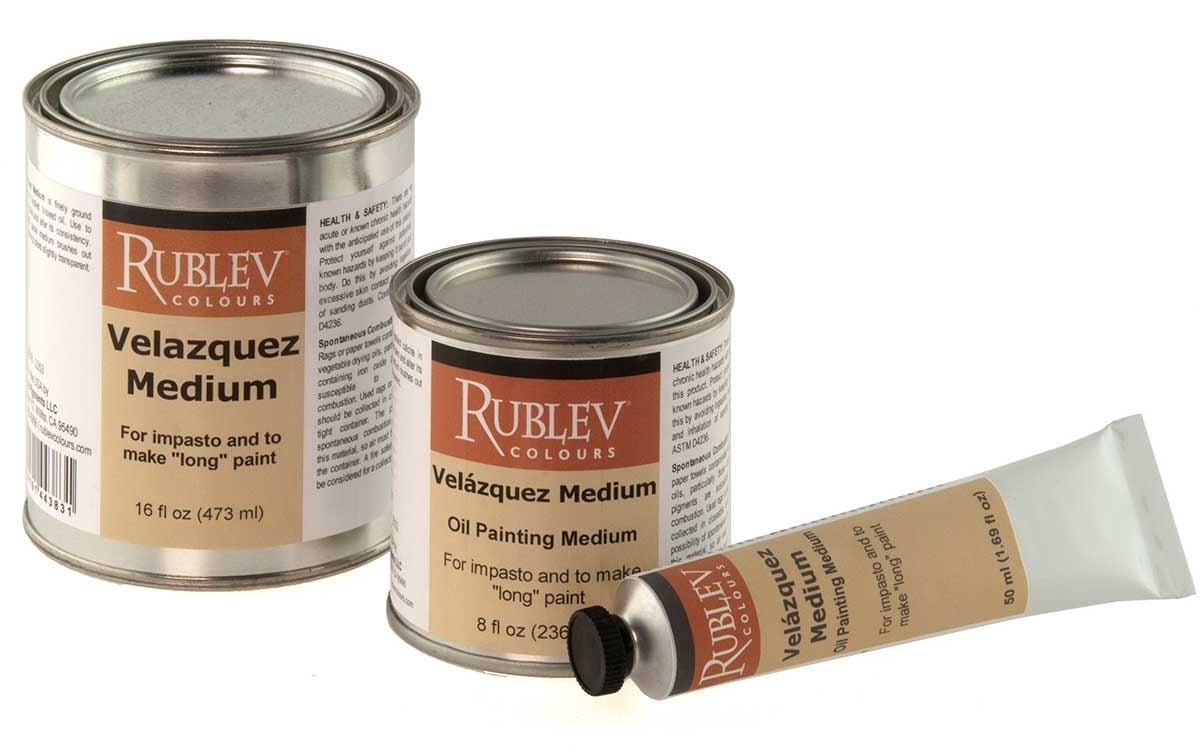
Velázquez Medium
Velázquez Medium is an oil painting medium of finely ground calcite in bodied linseed oil. Use it to extend paint and alter its consistency, making oil colors’ long’ for finer detail and impastos. Although oil paint becomes long when you add Velázquez Medium, it holds brushstrokes well. This flowing paste makes colors slightly transparent while allowing you to build impasted, thick paint applications. Velázquez Medium does not alter the color temperature of oil paint. It also does not affect the drying time significantly. You can thin it with solvents or oils. Velázquez Medium does not contain stearates, solvents, driers, or natural or synthetic resins, so it is safe to add to oil paint without the worry of cracking or delaminating.
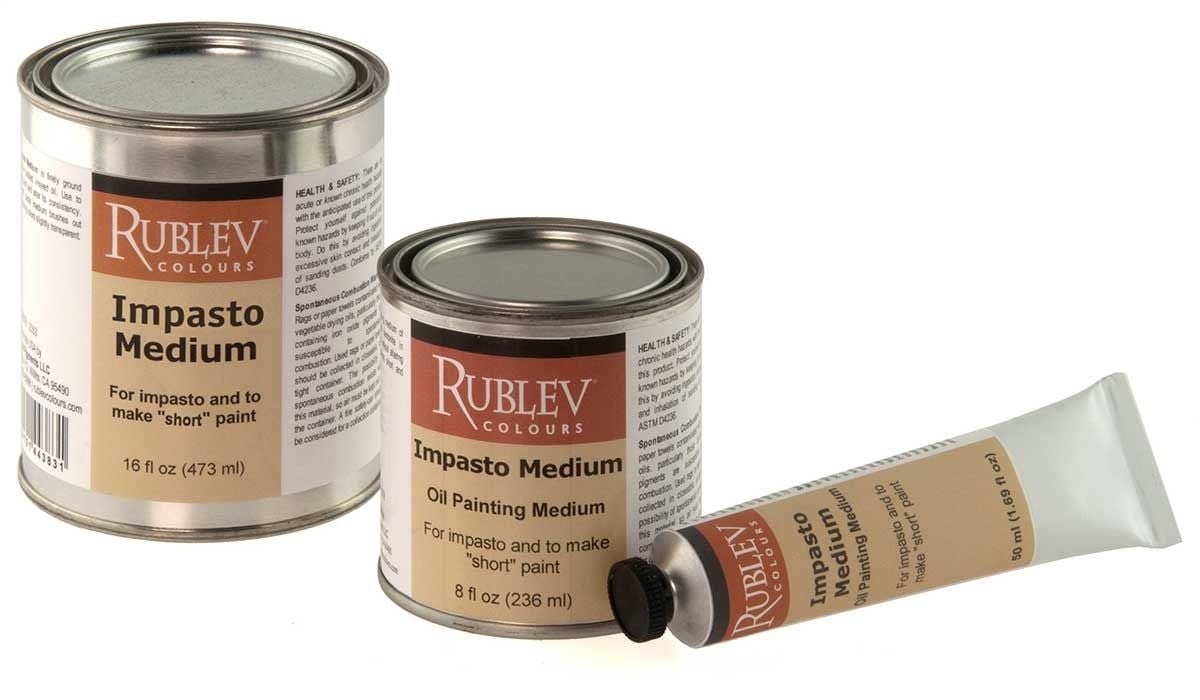
Impasto Medium
Impasto Medium is an oil painting medium of finely ground calcite, barite, and bentonite in linseed oil. Use it to extend paint without softening its consistency or making oil colors’ short’ and buttery for impastos. Impasto medium makes colors slightly transparent while allowing you to build impasted, thick paint applications. Impasto Medium does not alter its color temperature when oil or alkyd colors are added. Thin with most solvents or any drying oil. It does not significantly affect the drying time. It does not contain stearates, solvents, driers, resins, or other additives. Safe to add to oil paint without the worry of cracking or delaminating.
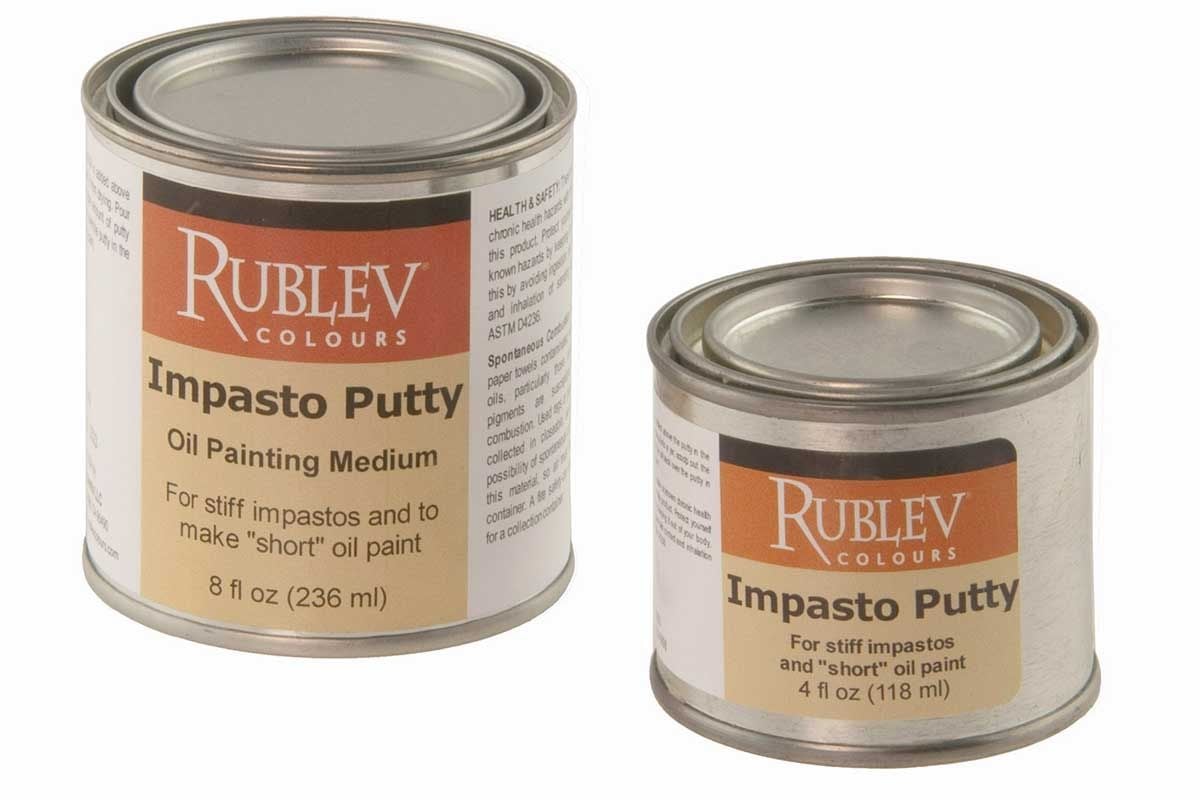
Impasto Putty
Impasto Putty is an oil painting medium of finely ground calcite, barite, and bentonite in linseed oil. Use it to extend paint without softening its consistency and make oil colors’ short’ and buttery for impastos. Stiffer than Impasto Medium and Velázquez Medium, Impasto Putty allows you to build thicker impasted layers of oil paint and can be applied with a palette knife. Always mix with oil or alkyd colors. When applying thick layers, allow ample time to dry before repainting.
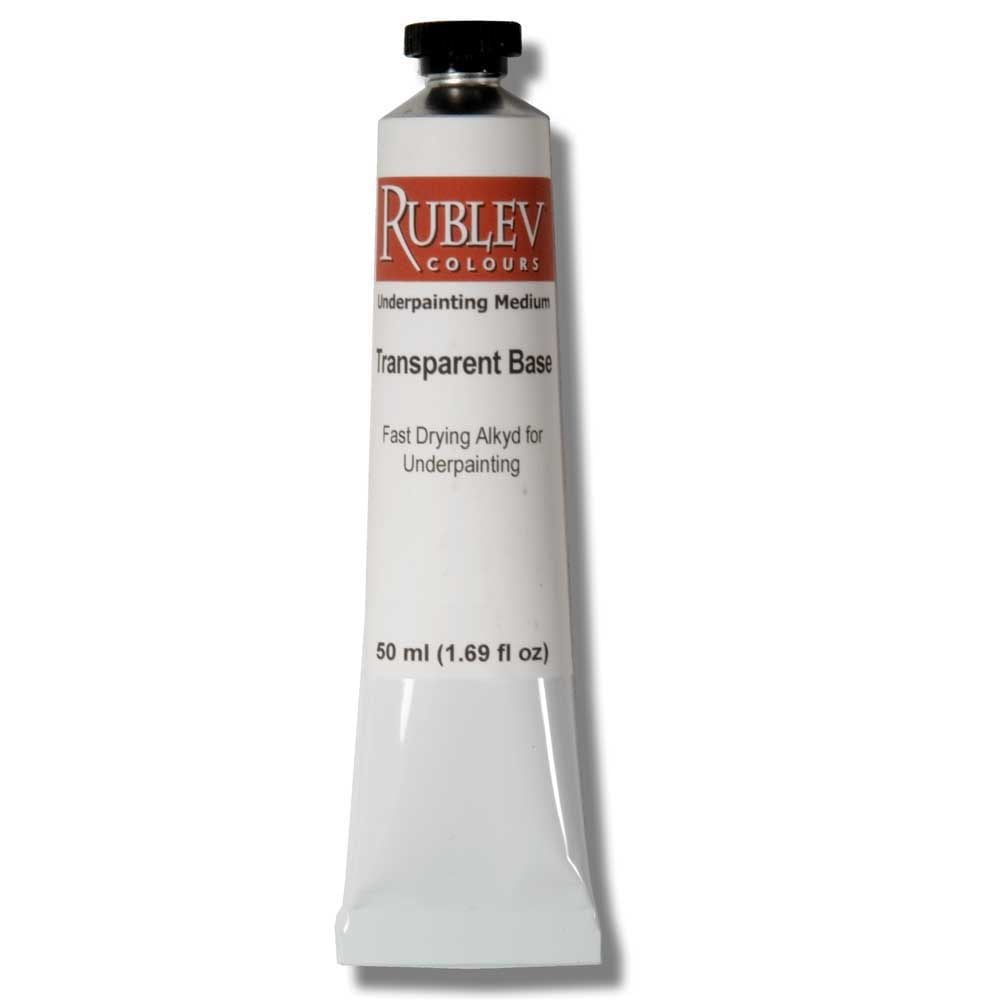
Underpainting Base
Underpainting Transparent Base is a fast-drying, alkyd paste medium, similar to Velázquez Medium in handling properties but speedy drying. This alkyd paste medium consists of finely ground calcite (calcium carbonate) and wollastonite in an alkyd vehicle with mineral spirits. Add to any oil color for fast-drying underpaintings. Best used only in underpainting because the paint layer usually dries within two hours. Adding it to oil colors makes them slightly transparent, allowing greater control over tints without using whites. It dries to a matte finish and does not contain driers.
Can Paste Mediums be Used for Glazing?
What may be surprising to most painters is that paste mediums can be used to create glazes. Although clear fluid or gel mediums achieve transparency with smaller amounts of the medium than paste mediums, they also increase the binder or the “fat” of the paint film. Each addition of fluid or gel mediums decreases the paint film’s pigment volume concentration (PVC), requiring more drying time and increasing the potential for yellowing. So, there are advantages to using paste mediums for glazing.
Opacity and Transparency of Paint Mediums
To help understand how paste mediums can be effectively used for glazing techniques in a painting, we need to understand the nature of opacity and transparency.
Paint is usually applied to hide or mask the underlying substrate entirely. The opacity of the coating determines this ability. Given the same thickness of applied paint film, not all paints have the same opacity.
Opacity is a simple phenomenon that results from the complex interplay of various components—pigments, extenders, binder, and parameters, such as pigment dispersion, film thickness, etc., in a paint formulation.
Opacity is one of the essential properties of paint. It quantifies how effectively paint covers the surface. On the other hand, hiding power is the ability to hide the underlying layer or painting support. Opacity is a film property while hiding power is a property of the paint. Hiding power is also known as opacity.
Methods to Measure the Opacity and Hiding Power
There are several ways to measure paint’s opacity and hiding power; the most common is using spectrophotometers in the “contrast-ratio method.” The contrast ratio is defined as the apparent reflectance of the material backed by a perfectly absorbing surface (black) divided by its apparent reflectance when backed by a white surface.
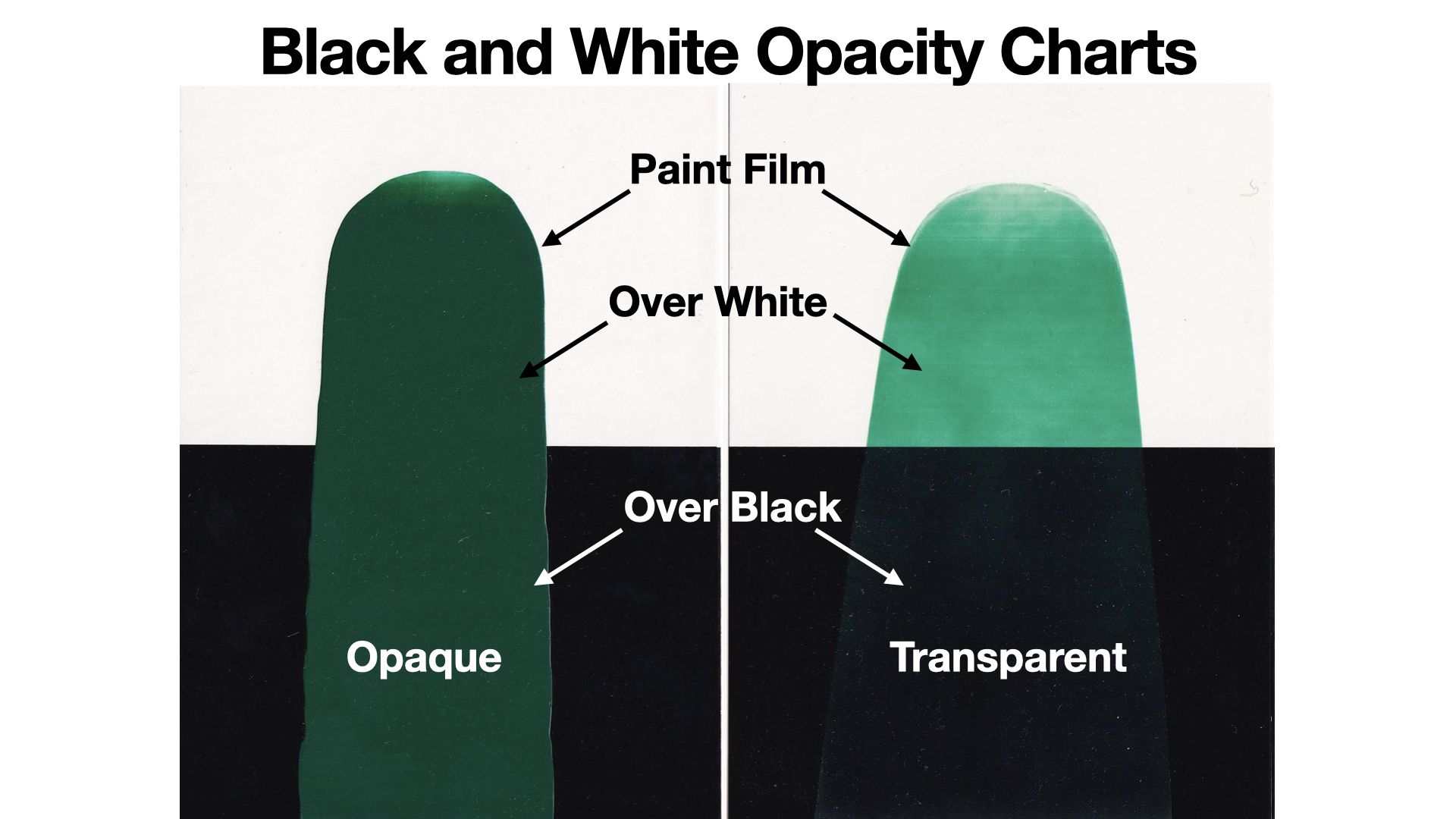
The ratio between these two reflectances is the contrast ratio. Opacity (%) is simply the Contrast Ratio (C/R) multiplied by 100 to get a percentage, where 100% is complete hiding.
Opacity (%) or Contrast Ratio (C/R) = (Rb / Rw) x 100
The test method consists of spreading the paint over an opacity card (a thick paper card with black and white strips) and measuring the reflectance of the dried paint film on the white (Rw) and black areas (Rb). The paint is applied with a drawdown bar—a metal bar with a gap between the bar and the surface beneath. This paint sample is called a “drawdown.” The paint is placed on top of the card. Moving the drawdown bar at a constant velocity causes the paint to be spread over the card in a thick film. The thickness of this film is directly related and customarily assumed to be equal to the gap depth of the drawdown bar used. The paint is left to dry, and the C/R is then determined.
If the paint has a Contrast Ratio (C/R) of 100 or 100%, it is opaque or completely hides the underlying substrate. On the other hand, a Contrast Ratio of 0 is completely transparent.
The C/R allows us to quantify the apparent opacity of paint with various amounts of medium added. In the series of drawdowns in this article, we used viridian oil paint as the test paint, to which we added different mediums in ratios from one to four parts by volume. Each paint and medium mixture were applied in 2 and 6 mil thicknesses. One mil is equal to a thousandth of an inch. To help visualize the thicknesses, two mils is the average thickness of human hair, whereas six mils is the thickness of office paper.
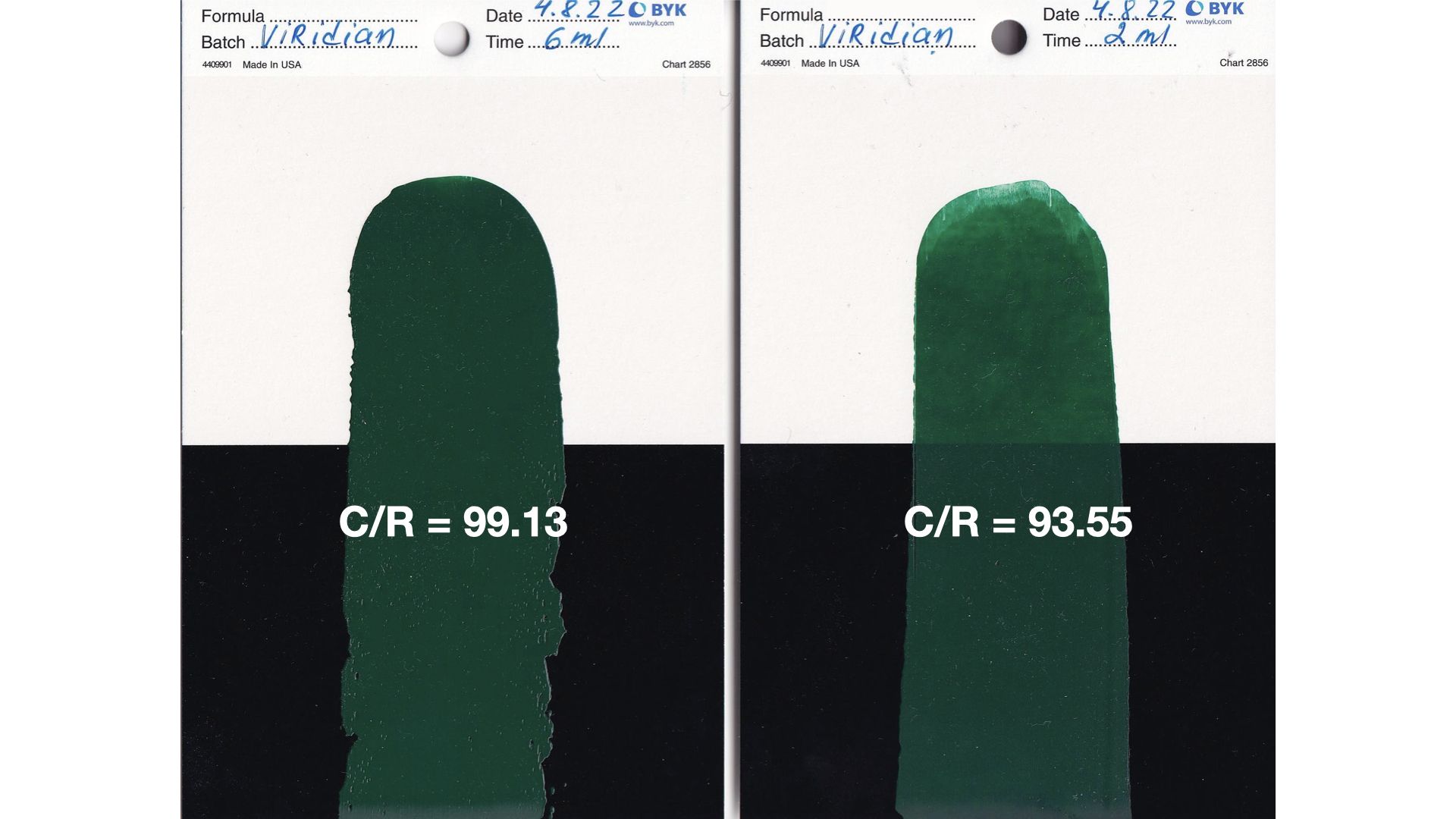
Viridian oil paint was applied in 6 mils and two mil thicknesses. The C/R is 99.13 and 93.55, respectively, for viridian oil paint applied in 6 and 2 mil thicknesses.

Four parts by volume of viridian oil paint and one part by volume of Velazquez Medium were mixed and applied in 6 mils and two mil thicknesses. The C/R of the two mil drawdown is 90.95.
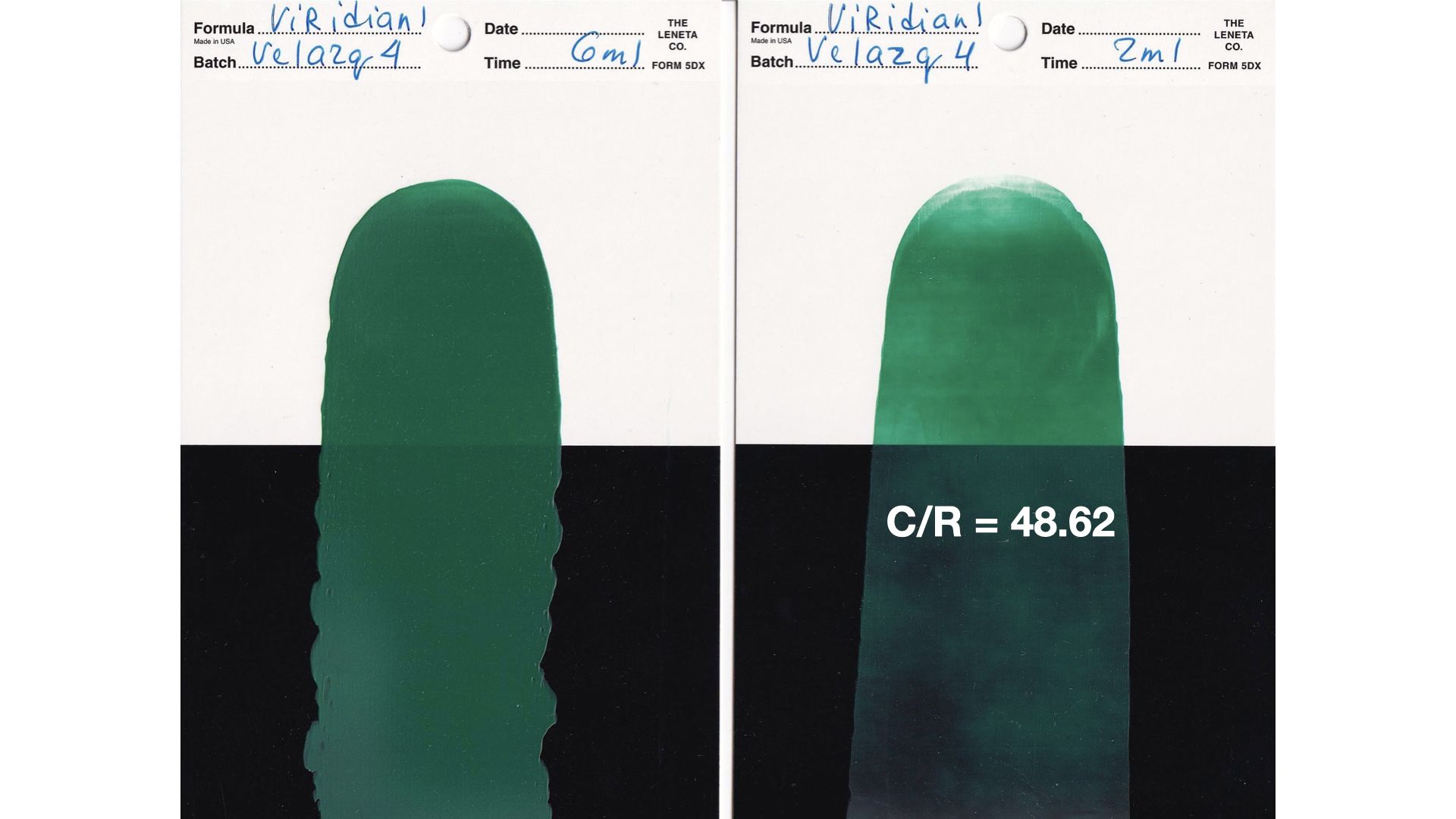
One part by volume of viridian oil paint and four parts by volume of Velazquez Medium were mixed and applied in 6 mils and two mil thicknesses. The C/R of the two mil drawdown is 48.62. The C/R of viridian oil paint was decreased by more than 42 points.
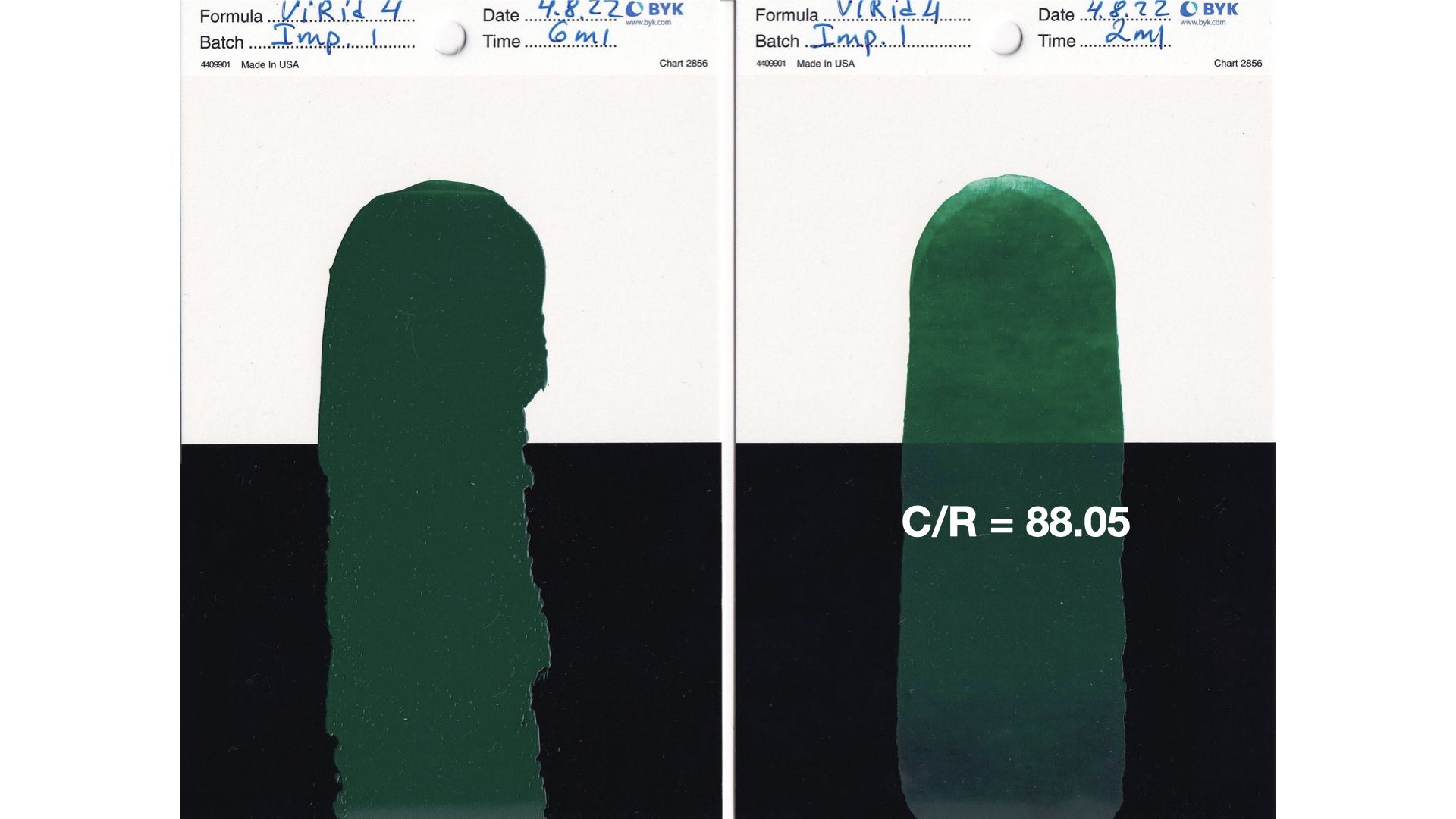
Viridian oil paint is mixed with Impasto Medium in a ratio of 4 to 1 and applied in 6 mils and two mil thicknesses. The C/R of the two mil drawdown is 88.05—slightly less than Velazquez Medium for the same conditions. The difference, however, is barely perceptible with unaided human vision.
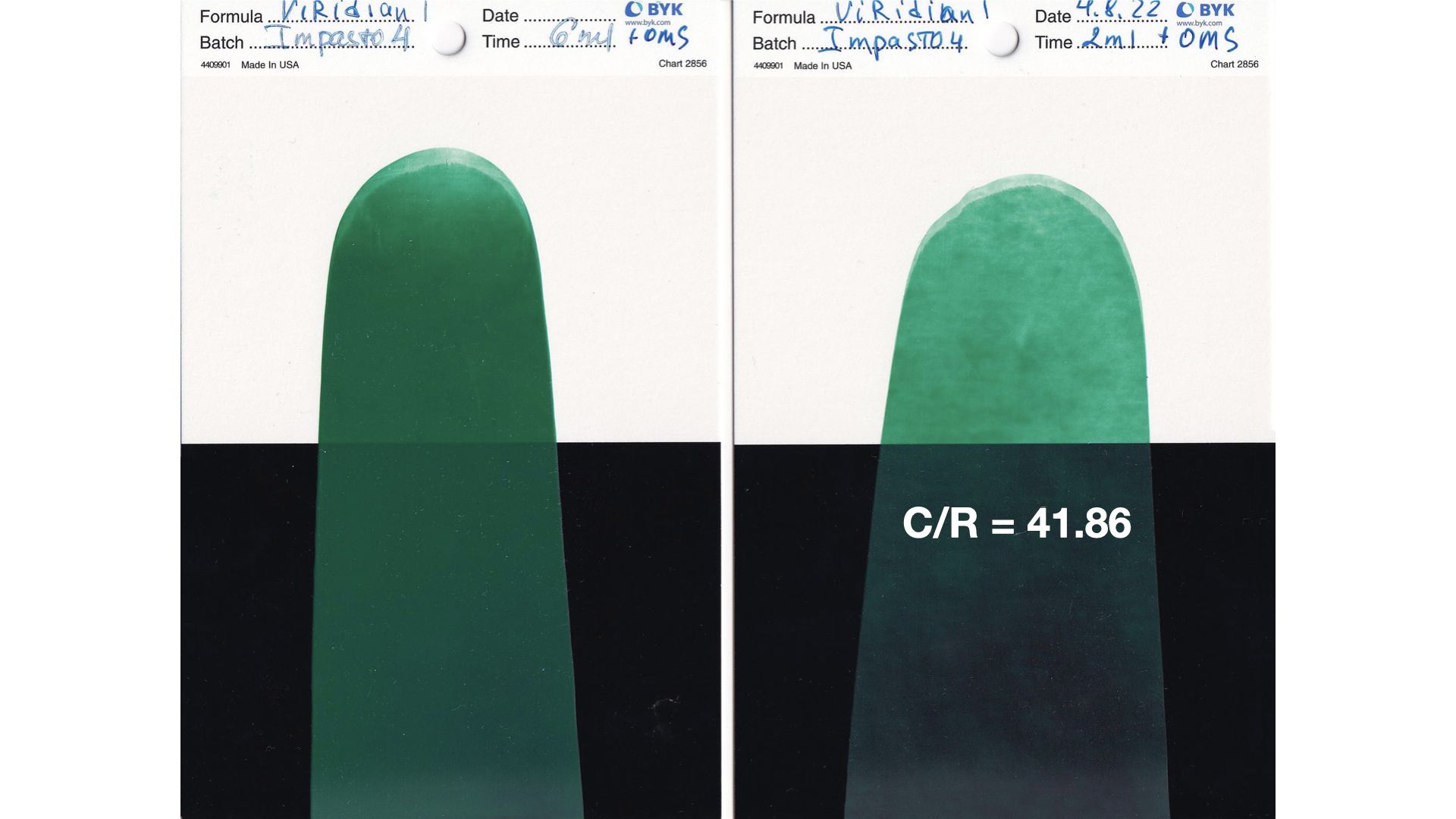
Viridian oil paint is mixed with Impasto Medium in a ratio of 1 to 4 and applied in 6 mils and two mil thicknesses. The C/R of the two mil drawdown is 41.86.
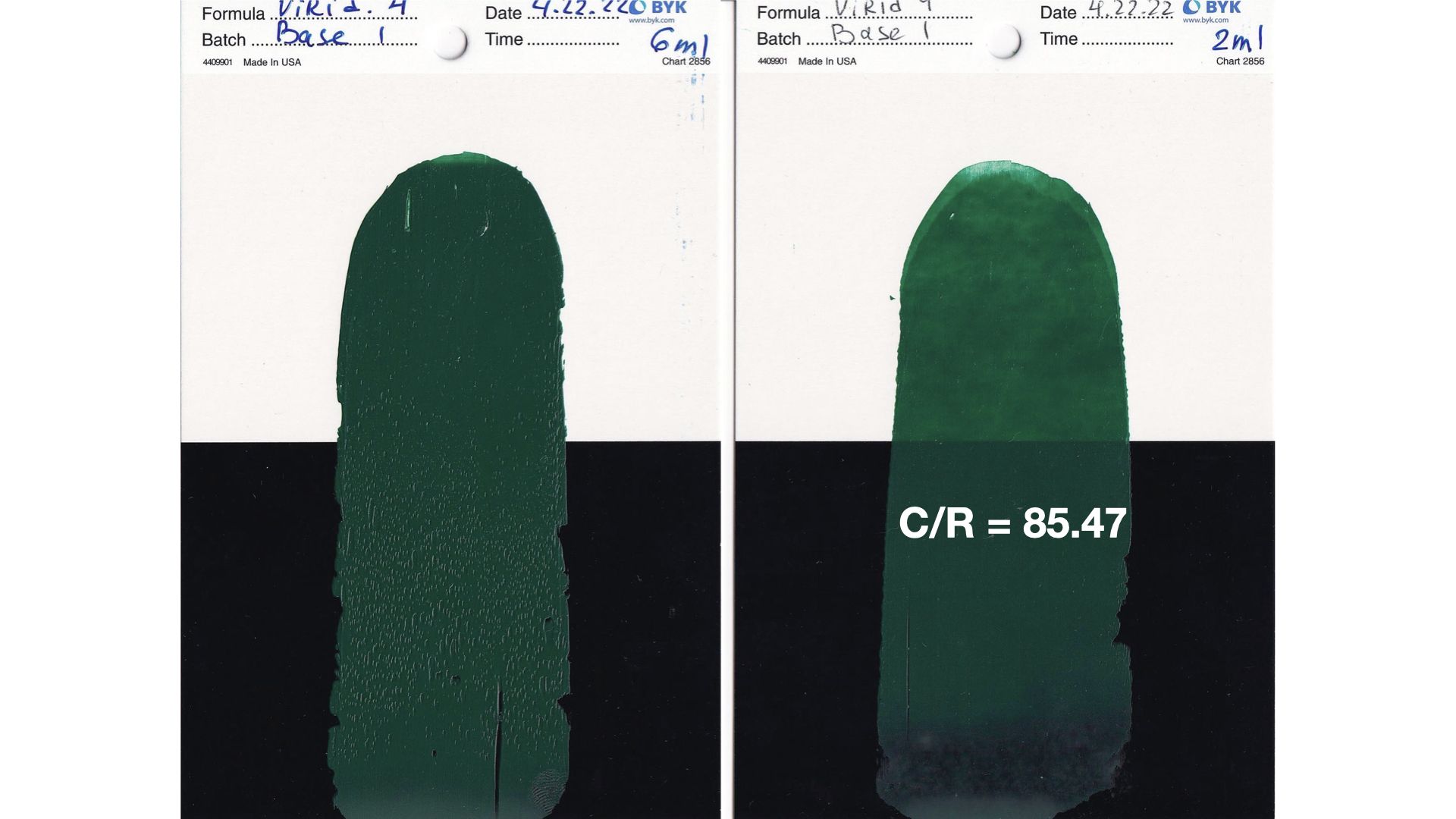
Viridian oil paint is mixed with Underpainting Transparent Base in a ratio of 4 to 1 and applied in 6 mils and two mil thicknesses. The C/R of the two mil drawdown is 85.47.
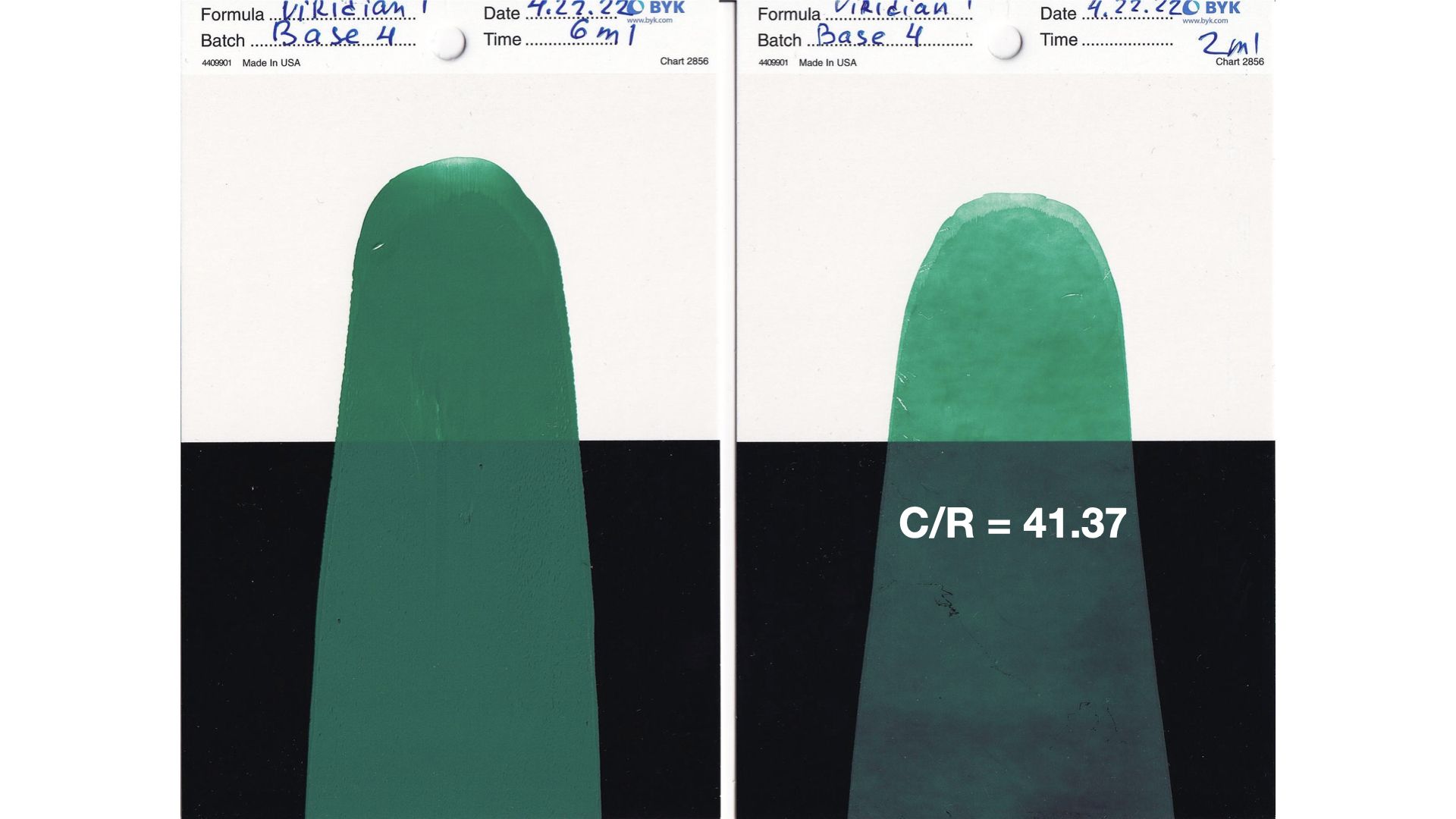
Viridian oil paint is mixed with Underpainting Transparent Base in the ratio of 1 to 4 and applied in 6 mils and two mil thicknesses. The C/R of the two mil drawdown is 41.37.
Comparison of Opacity Reduction with Gel Painting Medium
To compare the effectiveness of paste mediums in glazing, we now provide the Contrast Ratios for our most popular gel medium—Oleogel.
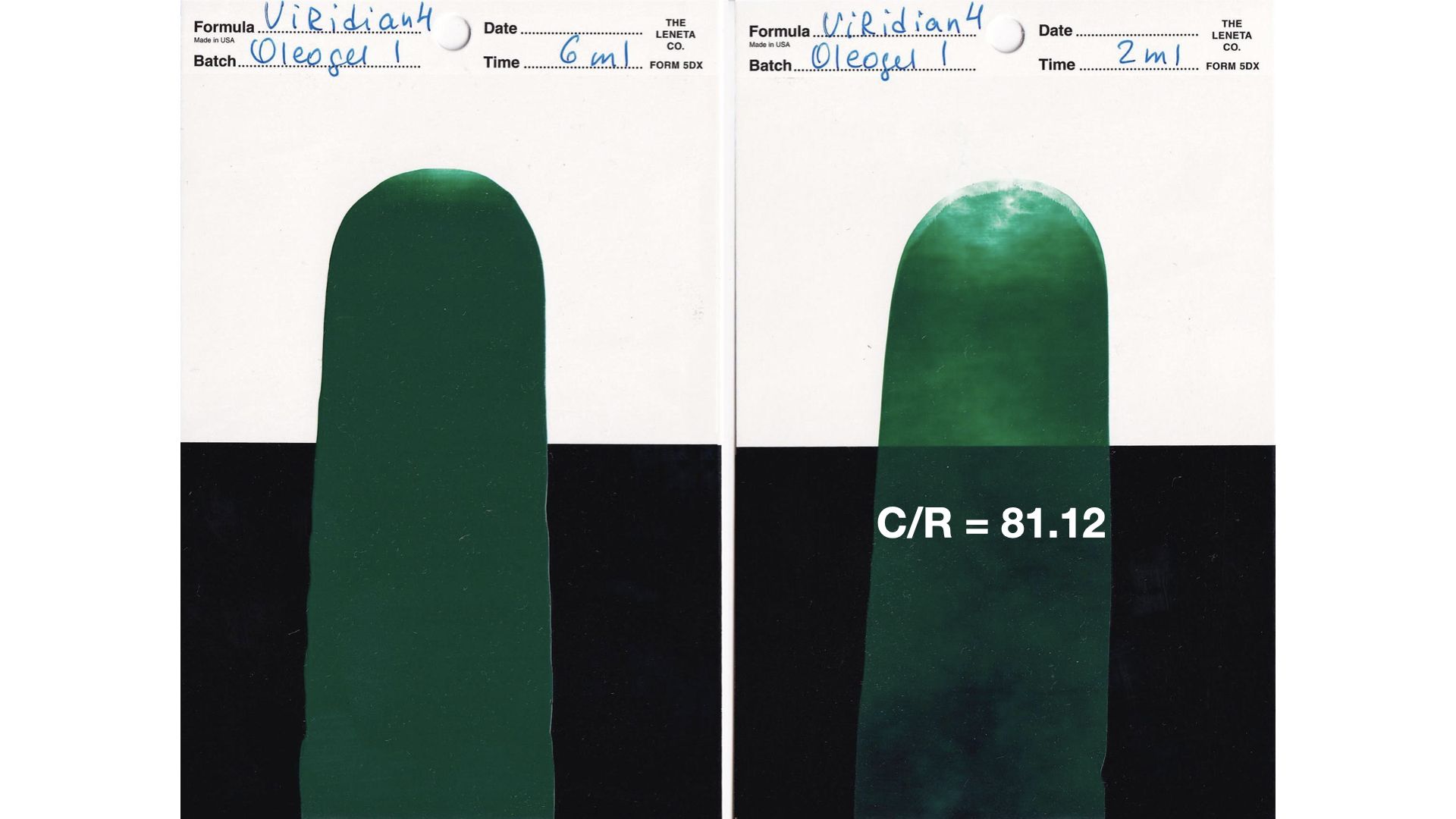
Viridian oil paint was mixed with Oleogel in 4 to 1 parts and applied in 6 mils and two mil thicknesses. The C/R is 81.12 for the viridian mixtures applied in 2 mil thickness.
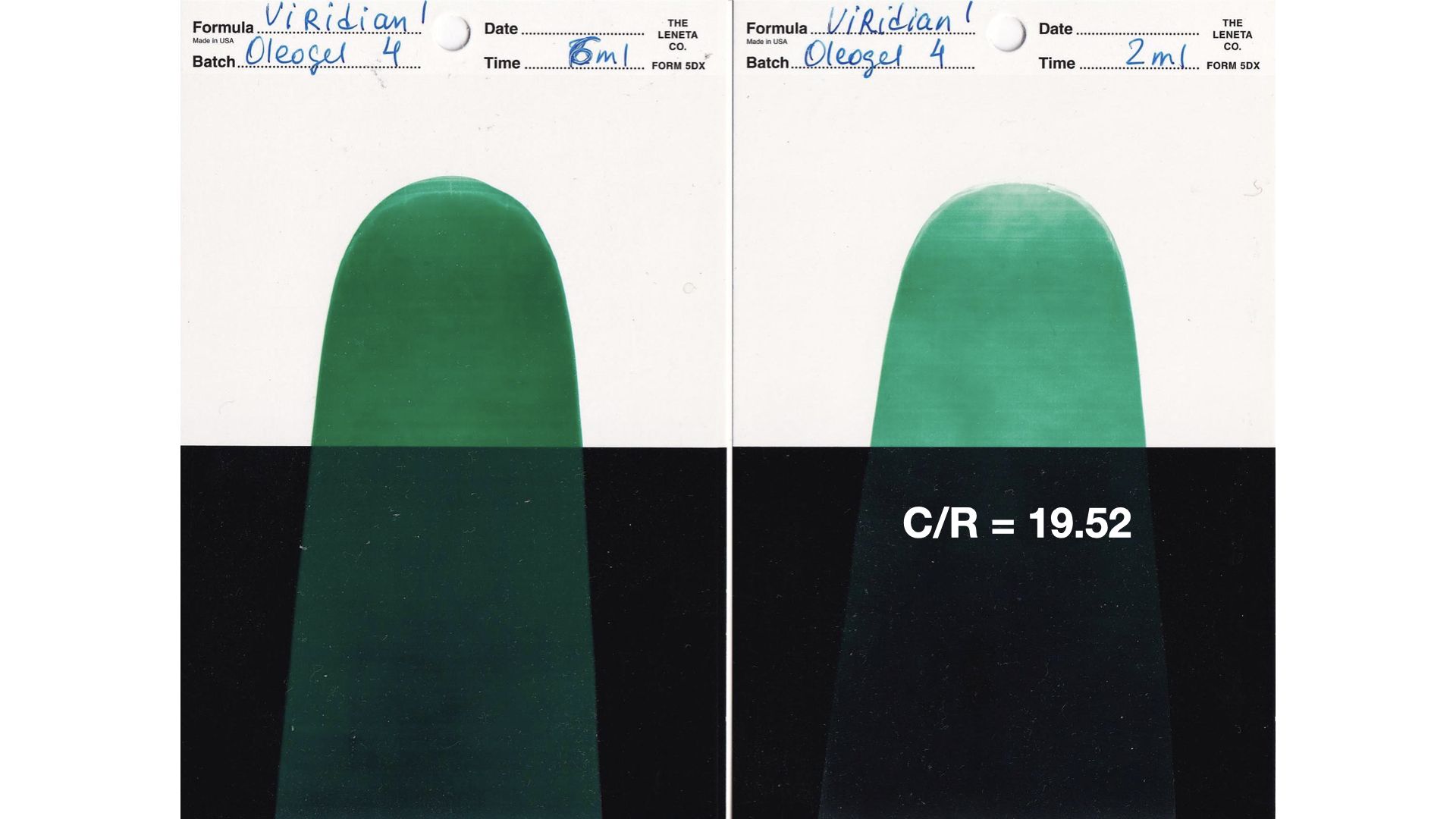
Now we reverse the proportions of viridian and Oleogel in a ratio of 1 to 4 and apply to the opacity charts in 6 mils and two mil thicknesses. The C/R is 19.52 for the two mil thick drawdowns.
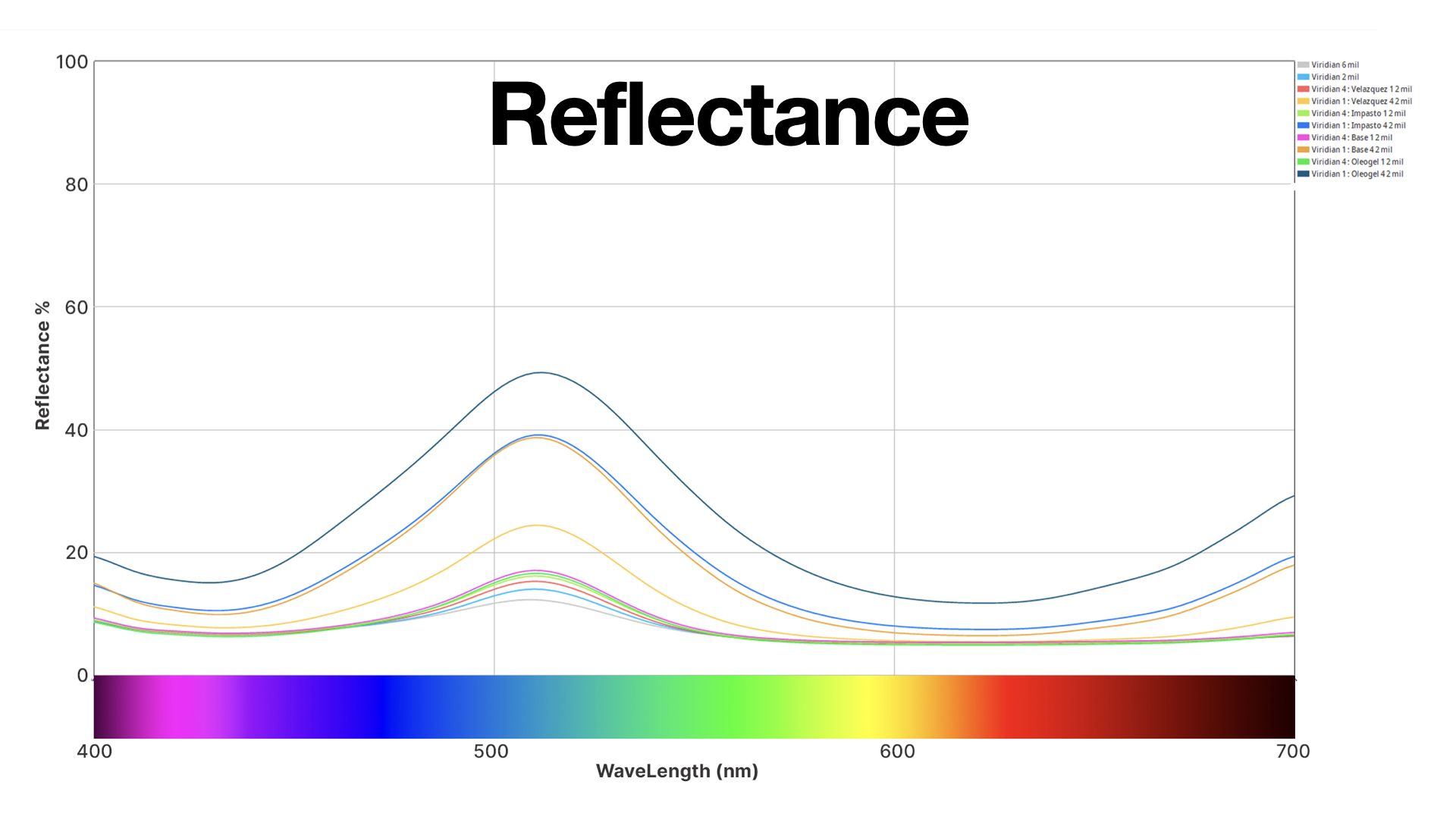
The reflectance of each sample is shown for each wavelength of visible light.
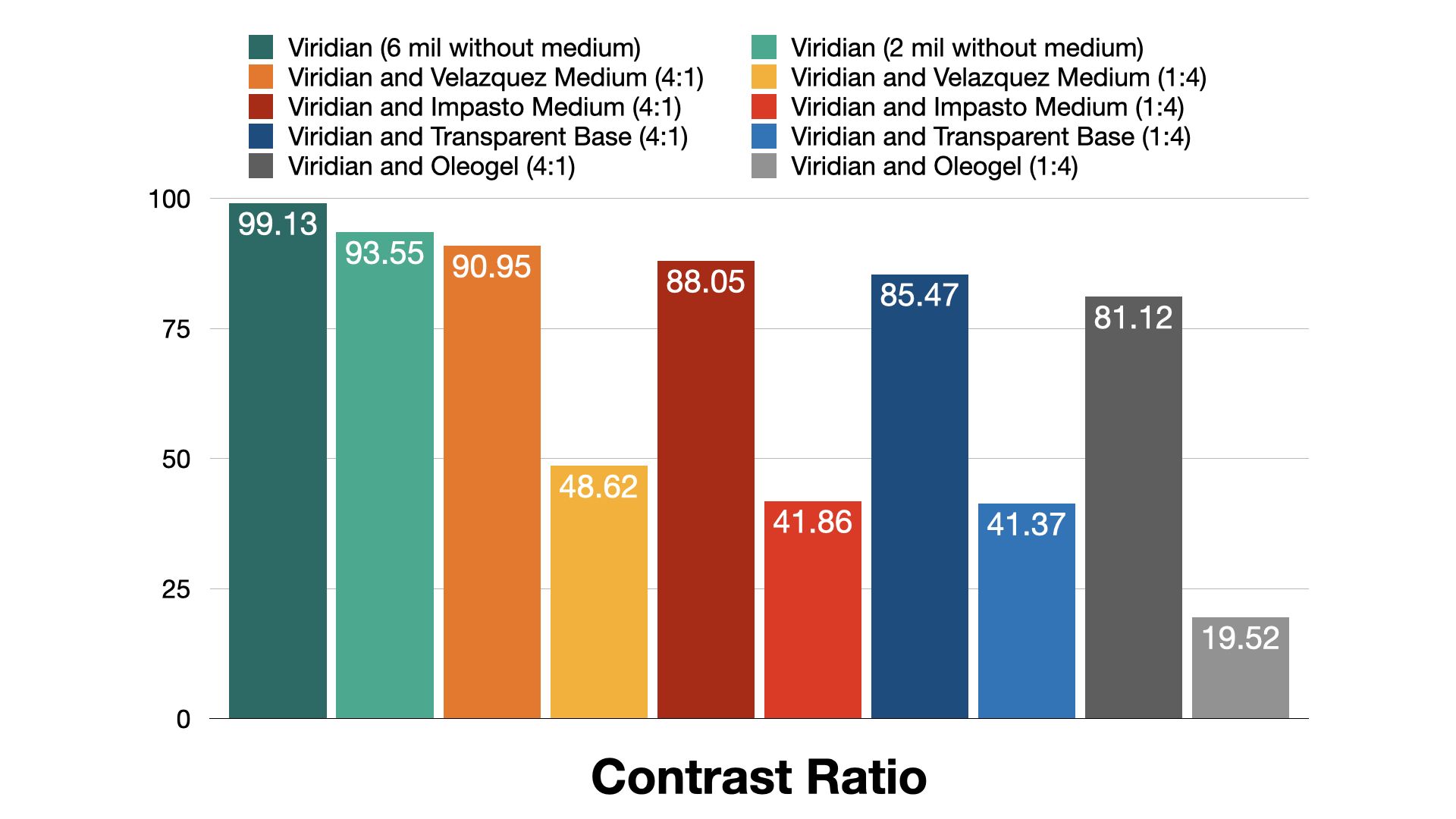
We can summarize the contrast ratios in this chart of Contrast Ratios or C/R.
Whereas Oleogel obtains transparency much faster than paste mediums, adding a gel medium in amounts exceeding a ratio of one part of medium to four parts of oil color results in much slower drying times and increases the potential of yellowing. In our tests, the three paste mediums, Velazquez Medium, Impasto Medium, and Impasto Putty, did not significantly retard drying. Underpainting Transparent Base, of course, dried very fast—in hours.
Each paste medium also provides different brushing qualities and different appearances of the dried paint film. This will be discussed in a forthcoming article on the apparent gloss of paste mediums.
Paste mediums may be an excellent alternative to gel and fluid oil painting mediums when it comes to creating impastos and glazing techniques in painting.

